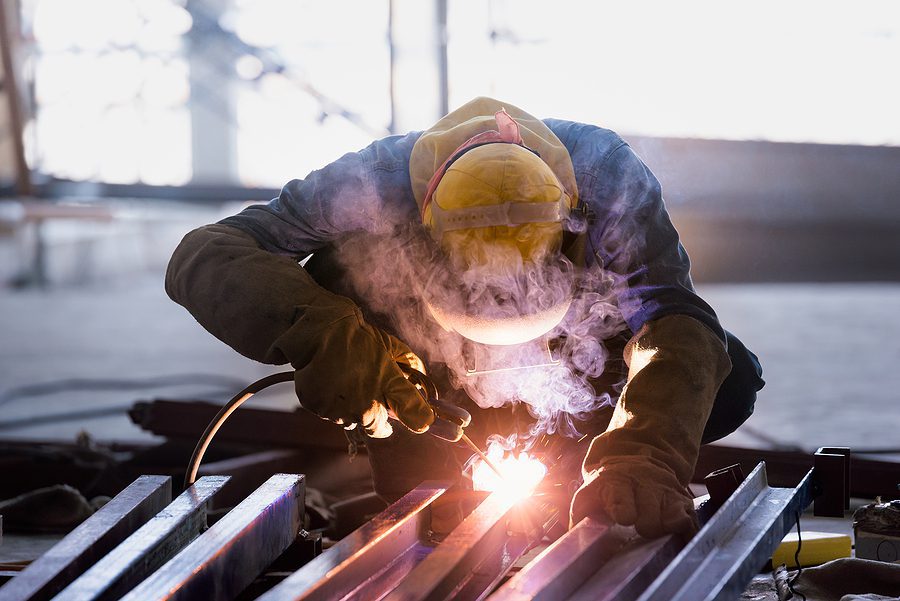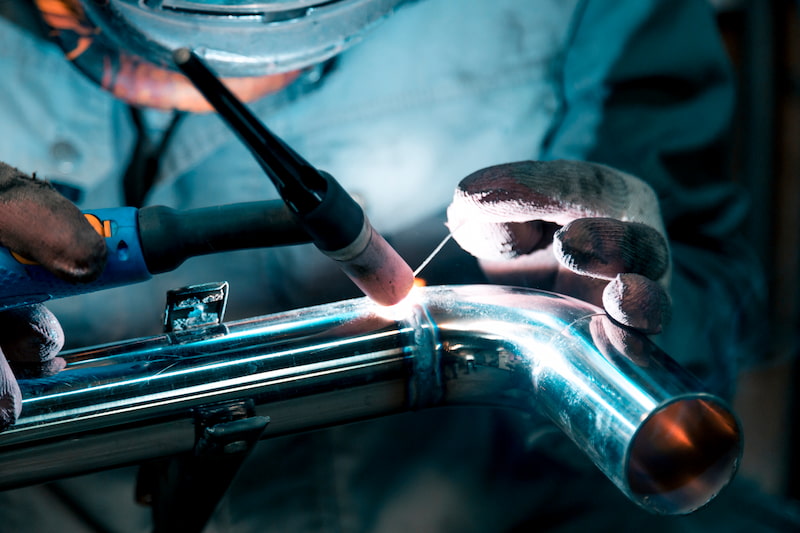Quick tips for poor fusion from Montana Mobile Welding and Repair
Typical Welding Repair Issues and Exactly How to Address Them Effectively
Welding repair work commonly experience a range of concerns that can threaten the stability of the last item. Common issues consist of poor penetration, porosity, and misalignment, to name a few. Each problem provides distinct difficulties that need details strategies for resolution. Comprehending these concerns is necessary for welders aiming to improve their results and skills. This conversation will explore these usual welding repair work issues and effective techniques to address them.
Insufficient Infiltration
Poor penetration happens when the weld metal falls short to totally fuse with the base product, causing weak joints and potential architectural failings. This issue usually originates from insufficient warmth input, wrong electrode angle, or improper welding speed. Welders might experience insufficient penetration because of a miscalculation of the essential criteria for a specific material density or kind. Furthermore, contamination on the base product's surface can hinder efficient bonding, intensifying the problem. To deal with poor infiltration, welders should assure ideal settings on their equipment and maintain a tidy work surface. Normal evaluation of welds is recommended to identify any kind of shortages early, allowing for prompt adjustments and the avoidance of endangered structural integrity in bonded settings up.
Porosity
Porosity is a typical issue in bonded joints that shows up as tiny gas bubbles entraped within the weld metal. This defect can jeopardize the stability of the weld, leading to minimized strength and prospective failing under tension. Montana Mobile Welding and Repair. Porosity generally occurs from contamination, wetness, or improper welding strategies, which enable gases to escape into the molten weld pool. To deal with porosity, welders must ensure proper surface area prep work, maintain a tidy functioning atmosphere, and utilize appropriate welding specifications. Additionally, selecting the best filler material and shielding gas can mitigate gas entrapment. Regular examination and screening of welds can aid recognize porosity early, ensuring prompt restorative actions are taken, consequently preserving the high quality and integrity of the bonded structure
Misalignment
Misalignment in welding can occur from different elements, consisting of inappropriate arrangement and thermal development. Understanding the origin is vital for reliable resolution. A number of improvement strategies are readily available to straighten elements and assure structural stability.
Reasons of Misalignment
Welding misalignment often comes from a selection of underlying concerns that can compromise architectural honesty. One main cause is incorrect fit-up of parts before welding, which can lead to gaps and uneven surface areas. Variants in thermal expansion throughout the welding process can likewise result in distortion, particularly if the materials being joined have various coefficients of development. In addition, poor clamping and fixturing might fall short to hold elements safely in position, resulting in activity throughout welding. Poorly kept tools, consisting of welding machines and devices, might introduce inconsistencies in the weld bead, further adding to misalignment. Lastly, operator error, stemming from inadequate training or experience, can additionally play a substantial role in creating misaligned welds.
Correction Techniques Readily Available
Resolving imbalance properly calls for a mix of corrective strategies tailored to the particular concerns available. One usual approach is the usage of components or jigs to hold parts in the proper setting during welding, ensuring regular placement. Additionally, preheating the materials can help in reducing distortion and enhance fit-up. For significant imbalance, mechanical adjustment techniques, such as utilizing hydraulic jacks or clamps, can be used to fix the setting before welding. Post-weld warm therapy may additionally be essential to relieve stresses triggered by imbalance. Mindful assessment and adjustment during the setup stage can prevent misalignment concerns from coming to be significant problems, promoting a smoother welding procedure and boosting total structural stability.
Distortion
Distortion is a common difficulty in welding that can emerge from various variables, including unequal home heating and cooling. Recognizing the reasons for distortion is crucial for applying effective avoidance methods. Resolving this problem not just boosts structural stability however additionally boosts the general top quality of the weld.
Root causes of Distortion
When based on the extreme warmth of welding, materials typically undergo changes that can result in distortion. This sensation primarily occurs from thermal expansion and tightening during the welding procedure. As the weld area warms up, the product expands; upon cooling, it acquires, which can produce inner stresses. In enhancement, uneven heating throughout a workpiece can intensify these anxieties, leading to warping or bending. The kind of product additionally plays a significant function; metals with varying thermal conductivity and coefficients of development might respond in different ways, bring about uncertain distortions. Inadequate joint layout and insufficient fixturing can add to misalignment during welding, boosting the likelihood of distortion. Comprehending these causes is vital for efficient welding repair service and prevention approaches.
Avoidance Techniques
Efficient prevention strategies for distortion during welding concentrate on controlling warm input and making certain proper joint layout. Maintaining a regular warm input assists to decrease thermal growth and tightening, which can lead to distortion. Using strategies such as preheating the workpiece can also minimize the temperature level gradient, advertising consistent heating. Additionally, picking proper joint layouts, such as T-joints or lap joints, can improve stability and decrease tension concentrations. Carrying out correct fixturing to protect the work surfaces in place even more help in maintaining placement throughout the welding process. Lastly, staggered welding sequences can disperse warm a lot more evenly, stopping local distortion. By using these approaches, welders can substantially decrease the probability of distortion and boost the general top quality of their welds.
Splitting
Cracking is a typical problem run into in welding fixings, commonly resulting from various factors such as inappropriate air conditioning prices, material option, or insufficient joint prep work. The occurrence of cracks can considerably compromise the integrity of the weld, causing prospective failings throughout procedure. To address this problem, welders need to first assess the origin, guaranteeing that products are compatible and suitably chosen for the specific application. In addition, controlling the cooling rate during the welding process is crucial; fast cooling can cause stress and anxiety and lead to breaking. Appropriate joint style and prep work likewise add to decreasing the danger. Executing these approaches can boost weld high quality and toughness, inevitably decreasing the possibility of breaking in finished weldments.

Insufficient Fusion
A significant concern in welding repairs is incomplete combination, which occurs when the weld steel does not effectively bond with the base product or previous weld passes - Welding. This problem can bring about weaknesses in the joint, potentially endangering the stability of the bonded structure. Variables adding to incomplete blend consist of insufficient warm input, incorrect welding technique, and contamination of the surface areas being signed up with. To check out this site address this issue try these out efficiently, welders should guarantee correct pre-weld cleansing and surface prep work, as well as change their welding criteria to accomplish adequate infiltration and fusion. Normal inspection during the welding procedure can additionally assist recognize incomplete blend early, permitting for timely restorative measures to enhance the overall high quality of the weld
Overheating
While welding repairs can boost structural integrity, overheating offers a considerable obstacle that can result in product destruction. Extreme warm during welding can alter the mechanical buildings of steels, causing minimized stamina, increased brittleness, and warping. This phenomenon is especially critical in high-stress applications where structural reliability is critical. Recognizing getting too hot can include aesthetic inspections for discoloration or distortion, in addition to checking temperature during the welding process. To reduce the dangers connected with getting too hot, welders need to employ suitable methods, such as managing warm input, changing travel rate, and making use of ideal filler materials. Furthermore, executing pre- and post-weld warm therapies can help restore material residential or commercial properties and improve the general top quality of the repair, ensuring lasting efficiency and security.
Regularly Asked Inquiries
What Are the Usual Indicators of a Welding Flaw?

Just How Can I Evaluate My Welds for High quality?
To evaluate welds for high quality, one can utilize aesthetic evaluations, ultrasonic testing, and radiographic approaches. Each strategy ensures structural stability, recognizes defects, and confirms adherence to specified requirements, ultimately improving the integrity of the welded joints.
What Safety Precautions Should I Take While Welding?
When welding, one should prioritize security by using proper individual protective tools, making certain appropriate air flow, safeguarding combustible official source materials away, maintaining a tidy workspace, and being conscious of surroundings to stop crashes and injuries.
Can I Fix a Weld Without Redoing the Entire Joint?
Repairing a weld without redoing the whole joint is possible, relying on the damage (Fabrication). Techniques such as grinding, including filler material, or using a welding process can effectively address particular imperfections while protecting the surrounding structure
What Devices Are Essential for Reliable Welding Services?
Crucial devices for efficient welding repair work consist of a welding device, cord brush, grinder, safety gear, clamps, and filler materials. Each device plays a vital duty in making certain high quality and safety and security throughout the repair service procedure. Porosity generally emerges from contamination, dampness, or improper welding methods, which allow gases to leave into the molten weld pool. Badly conserved equipment, including welding devices and devices, might present variances in the weld grain, further contributing to misalignment. When subjected to the intense warm of welding, materials commonly go through modifications that can lead to distortion. Fracturing is a common problem run into in welding repair work, commonly resulting from different variables such as improper air conditioning rates, material choice, or insufficient joint prep work. A substantial concern in welding repairs is incomplete combination, which takes place when the weld steel does not adequately bond with the base material or previous weld passes.